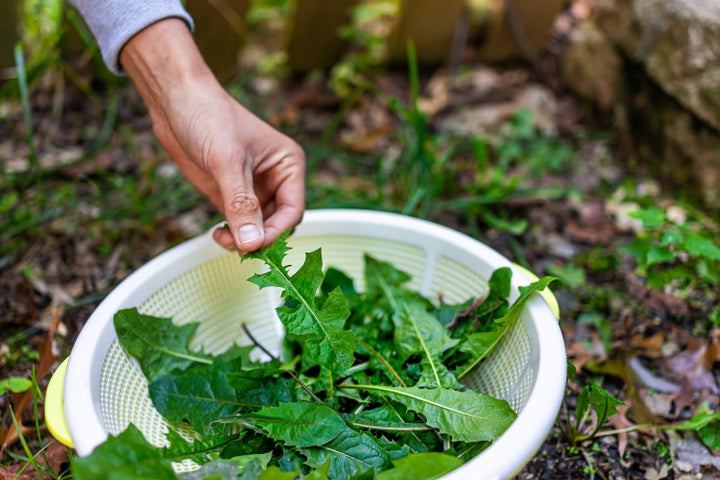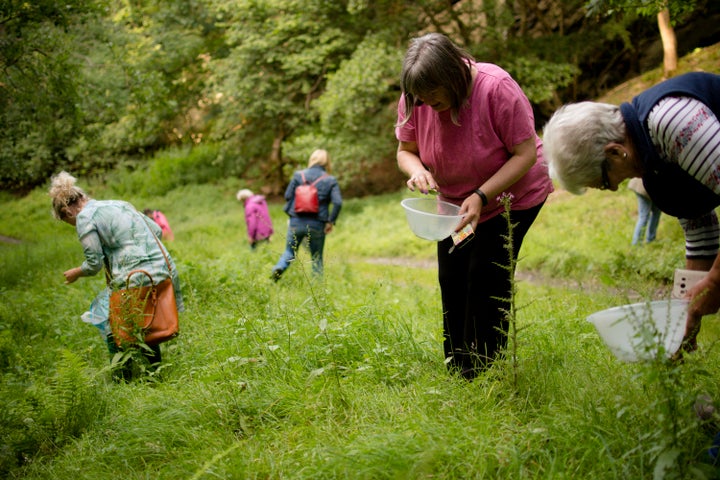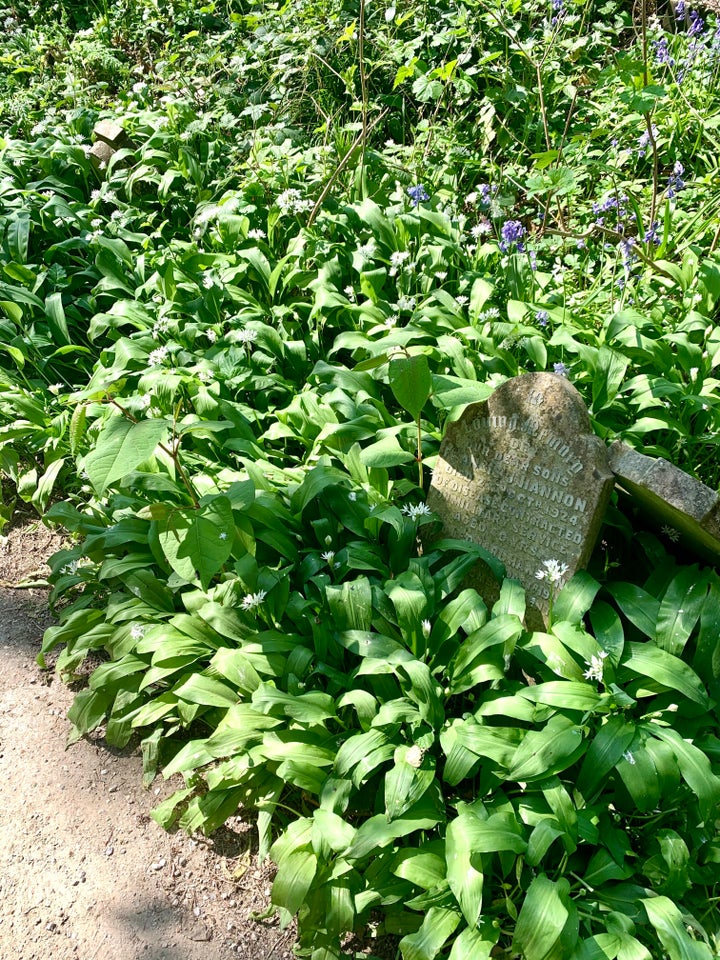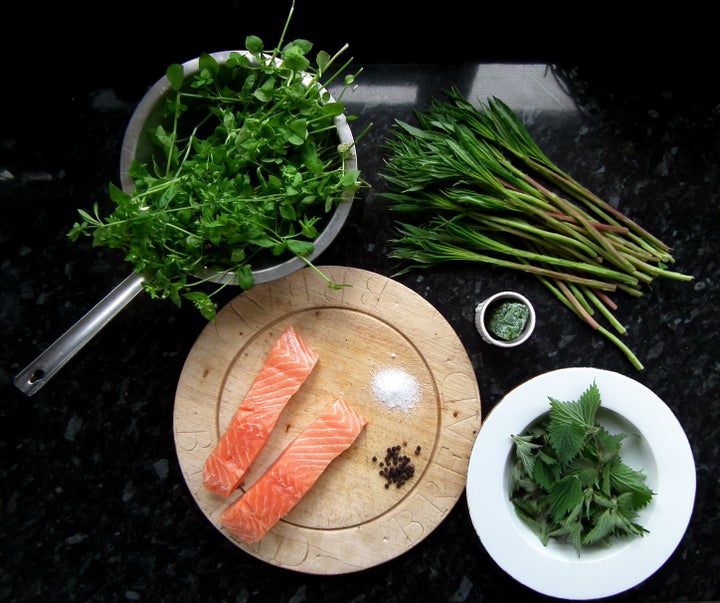
We’re here to guide you through the coronavirus lockdown. Sign up to the Life newsletter for daily tips, advice, how-tos and escapism.
It’s been just over a month into quarantine life and as we start to slip into new, surreal normality there’s a greater appreciation and interest for the natural beauty in the immediate areas near our homes. Rather than getting into the car or cramming ourselves on the tube on everyday commutes, we’re becoming more aware of what’s around us on government-sanctioned daily outings.
What better time than now to learn more about mother nature’s bounty? We should look towards the different ways to source what we can eat and go beyond the supermarket shelves.
Foraging is a concept that’s been around since forever, where hunter-gatherer tribes sustained themselves by hunting animals and gathering plants in their vicinity. Discover how to gather local edible plants, herbs and fruits with our beginner’s guide to foraging.

Be 100% certain and look out for recognisable things.
It’s tempting to dive straight into the deep end to look for something, but it’s important to do your homework and brush up on what’s out there beforehand. There’s a lot of information floating around, but wild food foraging experts Totally Wild UK’s plant, coastal and mushroom guides are a good place to start.
“Make sure you’re absolutely, sure about the identification before you put anything in your mouth and don’t rely on Google searches. Start small, start with something that you already know how to identify and you know vaguely is edible, then start looking for reliable sources of information about what you can do with it,” lead foraging expert Richard Prideaux from Original Outdoors in North Wales suggests to HuffPost UK. “Things like dandelion leaves and its flower are easy to identify because there’s nothing dangerous that looks like it. You can use them like a rocket in a salad.”
It’s surprising just how much is out there and ingredients that could be sat in our gardens, hedgerows or local parks just waiting to be eaten. Not only that, but wild food can be highly nutritious, locally sourced and unbelievably fresh.
“We’re making an effort to upload much more recipes and information on basic plants you can easily find growing everywhere on to our website,” explains lead foraging expert James Woods from Totally Wild UK. “We’ve just released a ‘wild veg box’ for people who usually eat lots of wild food but can’t get out to forage during the lockdown, so people can still get their foraged ingredients at home.”
Location, location, location.

Once the basics are down, it’s vital to know what spots are good for foraging and what areas are should be avoided.
“Ensure that you’re picking legally and safely. It’s fine to pick in public areas, as long as you’re picking for your own personal consumption,” advises John the Poacher, a local forager who supplies ingredients to some of London’s best bars and breweries, cafés and restaurants. “If you’re picking on private land or planning to sell, then it becomes a problem because there’s an old law about making money off of common land.”
Aside from that, it’s pretty much fair game on where you can and can’t pick, but according to John cemeteries or locations that are too close to the roads are places to stay away from. “It’s optional if you want to, but I tend to avoid cemeteries because there are arsenic and lead from the ancient coffins in the ground. When a coffin collapses, it will fall in and push the toxins in the soil up from the next one because the grounds are always shifting.” Yikes.
Make sure plants grow back for another year.
Found the perfect spot? Before you dive right in keep in mind there are some golden ground rules that newbie foragers should follow to ensure that plants, fungi, herbs and fruits grow back in the future so that more people can enjoy.
“People shouldn’t pick absolutely everything they see,” John suggests. “It’s crucial to pick little amounts from lots of different places and a couple of leaves or flowers here and there from each plant.”
It’s bad practice to mass-gather, horde items and discard unwanted things. Be sure to do the ethical thing and not pull items from the root otherwise this damages the delicate ecosystem.
Seasonality is key.
Found the perfect spot? Before you dive right in keep in mind there are some golden ground rules that newbie foragers should follow to ensure that plants, fungi, herbs and fruits grow back in the future so that more people can enjoy.
“People shouldn’t pick absolutely everything they see,” John suggests. “It’s crucial to pick little amounts from lots of different places and a couple of leaves or flowers here and there from each plant.”
It’s bad practice to mass-gather, horde items and discard unwanted things. Be sure to do the ethical thing and not pull items from the root otherwise this damages the delicate ecosystem.

Almost anything can be foraged and is edible. Whether or not they’re in full bloom or ripe for the picking is down to the right know-how, it’s easy to bring seasonal, hyper-local flavour to plates.
“We actually have a yearly calendar of what’s in season to help our foragers and there are roughly over 80 wild ingredients right now that are perfect for harvesting,” explains Woods. “Some of my personal favourite that is in season right now are; wild garlic, stinging nettles, cows parsley, common hogweed, three-cornered leeks, dandelion leaves and flowers.”
Combined with the change in seasons and new plants growing there’s a lot out there at the moment. “Dock leaves and young nettles are in season right now and they’re delicious too. If you wear gloves, you won’t get stung and the moment you cook them, all of the hairs that sting you will wilt away,” Prideaux recommends. “If a recipe uses spinach, try nettles instead using a one-to-one ratio. A nettle lasagne is delicious.”
The next time you’re out and about for your one piece of exercise, it won’t be a walk in the park. Keep your wits about you and look out for fresh, local greenery. If something doesn’t look right or you’re not entirely sure, then it’s best to move on and leave it alone. Most importantly, have fun foraging.